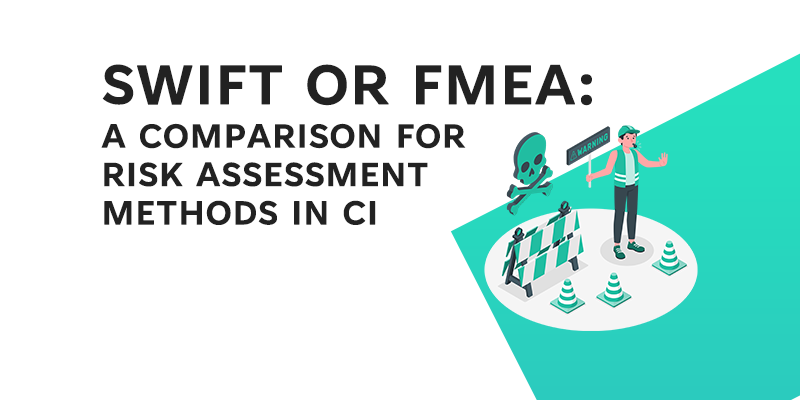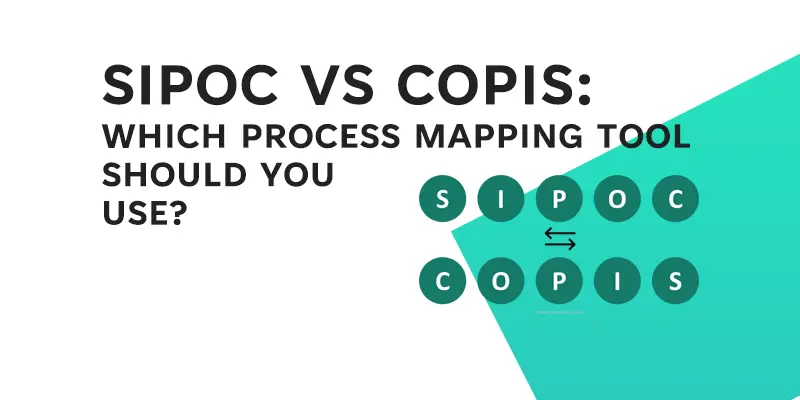When it comes to making things better and managing risks, it’s important to pick the right method. There are two main ways to do this: SWIFT and FMEA.
SWIFT helps you identify about different scenarios, while FMEA helps you understand what could go wrong and what that would mean.
In this article we will compare SWIFT and FMEA, looking at how they work, where they can be used, and what’s good and bad about them. Whether you’ve been doing this for a long time or are just starting, this comparison will help you make the right choice for improving things.
Table of Contents
Overview of SWIFT (Structured What-If Technique)
What is SWIFT?
SWIFT, or Structured What-If Technique, is a risk assessment method that systematically evaluates potential hazards or problems within a process or system. It’s often used during the early stages of project planning to identify risks that might not be immediately apparent.
Methodology
The SWIFT methodology involves a structured brainstorming session where a team identifies what could go wrong based on a set of predefined guide words.
Here’s a step-by-step guide to conducting SWIFT analysis:
- Define the Scope: Identify the system, process, or project to be analyzed.
- Assemble a Team: Include experts with diverse knowledge.
- Brainstorm Scenarios: Use guiding words to brainstorm potential failures or risks.
- Evaluate Risks: Assess the likelihood and impact of each risk.
- Develop Mitigation Strategies: Create action plans to manage identified risks.
Applications
SWIFT can be applied across various industries, including manufacturing, logistics, automotive, and more. It’s particularly useful for complex systems where traditional risk assessment methods might not be sufficient.
Benefits and Challenges
Benefits:
- Comprehensive: Captures a wide range of risks.
- Collaborative: Encourages team participation.
- Flexible: Adaptable to different industries and projects.
Challenges:
- Time-consuming: Can require significant time and effort.
- Dependent on Expertise: Success relies on the team’s knowledge and creativity.
Example
In my work as a CI Manager in the automotive sector, I once used SWIFT during the initial planning of a new assembly line. We were faced with a complex integration of automated and manual processes. By conducting a SWIFT analysis, we were able to uncover hidden risks related to synchronization, safety, and quality. This early identification enabled us to design targeted mitigation strategies, ensuring a smoother implementation and reducing unexpected delays. Using SWIFT proved beneficial in providing a structured and comprehensive approach to risk management in a highly intricate environment.
Overview of FMEA (Failure Modes and Effects Analysis)
Definition and History
Failure Modes and Effects Analysis, or FMEA as it is commonly called, is a structured approach to identifying potential failure modes in a system, process, or product. Which has created alternative versions for it such as SFMEA for System Failure Mode Effect Analysis and PFMEA for Process Failure Modes Effect Analysis.
It evaluates the potential effects of failures and prioritizes them based on their severity, occurrence, and detection ratings. FMEA has its roots in the aerospace industry of the 1960s and has since become a standard tool in various sectors.

Methodology
Conducting an FMEA involves a systematic analysis of potential failure modes and their consequences. Here’s a step-by-step guide:
- Identify the Subject: Define the process, product, or system to be analyzed.
- List Potential Failure Modes: Enumerate all possible ways a failure could occur.
- Determine Effects: Assess the potential consequences of each failure mode.
- Rate Severity, Occurrence, and Detection: Assign numerical values to quantify the impact, likelihood, and detectability of each failure.
- Calculate Risk Priority Number (RPN): Multiply the severity, occurrence, and detection ratings to prioritize risks.
- Develop Action Plans: Create strategies to reduce or eliminate high-risk failure modes.
Applications
FMEA is widely used in manufacturing, automotive, FMCG, logistics, and other industries where risk assessment is critical. It can be applied to products, processes, or services to enhance quality and reliability. In reality FMEA is suitable to apply anywhere there is a process as all processes have risks of failures and effects and need to be analysed to make improvements.
Benefits and Challenges
Benefits:
- Detailed: Provides in-depth analysis of each failure mode.
- Quantitative: Offers numerical ratings to prioritize risks.
- Proactive: Helps in identifying and addressing risks before they occur.
Challenges:
- Complexity: Can be time-consuming and requires specialized knowledge.
- Subjectivity: The accuracy of the analysis may depend on the expertise of the team.
Example
While working on a project to optimize a packaging line in the FMCG sector, I utilized FMEA to ensure that the new process would be robust and resilient. We identified potential failure modes such as misalignment, material defects, and equipment malfunction. By rating and prioritizing these risks, we were able to focus our efforts on the most critical areas, implementing preventive measures and quality checks. The FMEA process played a vital role in enhancing the efficiency and reliability of the line, leading to reduced downtime and increased productivity.
Comparing SWIFT and FMEA
The choice between SWIFT and FMEA can be challenging, and a clear understanding of their similarities, differences, and applicable scenarios is essential. In this section, we’ll critically analyze both techniques, highlighting areas where they excel or fall short.
Similarities
- Goal-Oriented: Both SWIFT and FMEA aim to identify and mitigate risks in processes, products, or systems.
- Team Collaboration: Both methodologies rely on cross-functional teams with diverse expertise.
- Structured Approach: Both use a systematic method to uncover potential failure modes or risks.
Differences
Complexity:
- SWIFT: Generally simpler and quicker, suitable for high-level analysis.
- FMEA: More detailed and time-consuming, offering a deeper dive into specific failure modes. This complexity can sometimes lead to analysis paralysis if not managed well.
Quantitative vs. Qualitative:
- SWIFT: Primarily qualitative, relying on expert judgment and scenarios.
- FMEA: More quantitative, with numerical ratings for severity, occurrence, and detection, allowing for a more objective comparison of risks. However, this can lead to false precision if the ratings are not carefully considered.
Flexibility:
- SWIFT: Highly adaptable to different situations, but might lack depth in highly specialized areas.
- FMEA: More rigid and specific, which may limit its applicability across diverse scenarios.
Cost and Resource Requirements:
- SWIFT: Typically requires fewer resources and less time.
- FMEA: Often more expensive and labour-intensive due to its detailed nature.
- Critical Analysis
SWIFT:
- Strengths: Ideal for early-stage risk identification, broader applications, and when quick insights are needed.
- Weaknesses: May overlook detailed failure modes, dependent on team’s creativity, and sometimes considered too superficial for complex systems.
FMEA:
- Strengths: Provides a granular understanding of risks, allows for numerical prioritization, and can lead to highly targeted risk mitigation strategies.
- Weaknesses: Can be overly complex, resource-intensive, and subject to biases in rating. The numerical approach may create a false sense of objectivity.
Conclusion of Comparative Analysis
Choosing between SWIFT and FMEA depends on the context, requirements, and resources of a particular project. While SWIFT offers a more agile and high-level view, FMEA provides a thorough, data-driven analysis. Care must be taken to avoid the pitfalls inherent in each method, such as superficiality in SWIFT or over-complexity in FMEA.
Choosing Between SWIFT and FMEA
The decision to implement SWIFT or FMEA depends on various factors such as the complexity of the system, available resources, industry requirements, and the level of detail needed in the analysis. In this section, we’ll provide guidance on how to choose between these two risk assessment techniques, along with recommendations for different scenarios.
Factors to Consider
- Project Complexity: Choose FMEA for highly complex projects requiring detailed analysis. Opt for SWIFT for more straightforward or high-level assessments.
- Resources and Time Constraints: SWIFT is generally more time-efficient and requires fewer resources, making it suitable for projects with limited budgets or tight deadlines. FMEA, while more comprehensive, may demand more time and expertise.
- Industry Specifics: Consider industry standards, regulations, and common practices. FMEA may be preferred in industries where quantitative risk analysis is emphasized, while SWIFT might be suitable for more dynamic and flexible environments.
- Team Expertise: Evaluate the knowledge and experience of the team. FMEA requires specialized skills and understanding, whereas SWIFT may be more approachable for teams with diverse backgrounds.
Recommendations
For Rapid Prototyping or Early-Stage Projects: SWIFT can provide quick insights and guide initial decision-making.
For In-Depth Analysis and Regulatory Compliance: FMEA is the go-to method, offering detailed insights and a systematic approach aligned with stringent quality standards.
For Cross-Functional Collaboration: Both methods encourage teamwork, but SWIFT’s flexibility may foster broader participation.
Tools and Resources
SWIFT Templates and Guides: Consider using structured templates or tools that facilitate SWIFT analysis, especially for those new to the method.
FMEA Software and Calculators: Utilize specialized software or calculators to streamline the FMEA process, particularly when handling complex systems.
The choice between SWIFT and FMEA is not a one-size-fits-all decision but depends on the specific context and needs of the project. Being critical of both methodologies and weighing their strengths and weaknesses against the project’s demands will lead to a more informed choice. Leveraging available tools and resources can further enhance the effectiveness of the selected method.
Conclusion
In the ever-evolving landscape of continuous improvement, risk assessment remains a cornerstone of success. The comparison between SWIFT and FMEA unravels two distinct paths, each with its unique strengths and challenges. SWIFT’s agility and high-level insights make it suitable for early-stage projects and broader applications, while FMEA’s in-depth, quantitative analysis caters to complex systems requiring meticulous scrutiny.
The choice between these methodologies isn’t binary but should be guided by the project’s complexity, industry norms, team expertise, and resource constraints. By critically evaluating both techniques and aligning them with specific needs, practitioners can foster a more resilient, efficient, and innovative environment. Whether opting for the scenario-based SWIFT or the detail-oriented FMEA, the ultimate goal is to harness these tools to drive continuous growth, enhance quality, and navigate the uncertainties of today’s dynamic world.
References
- Card, A.J., Ward, J.R. and Clarkson, P.J., 2012. Beyond FMEA: The structured what‐if technique (SWIFT). Journal of Healthcare Risk Management, 31(4), pp.23-29.
- Curran, K.L.F., Chamberlin, H.C. and Stirrup, T.S., 2016. SWiFT Hydraulic System FMEA (No. SAND2016-9674R). Sandia National Lab.(SNL-NM), Albuquerque, NM (United States).








